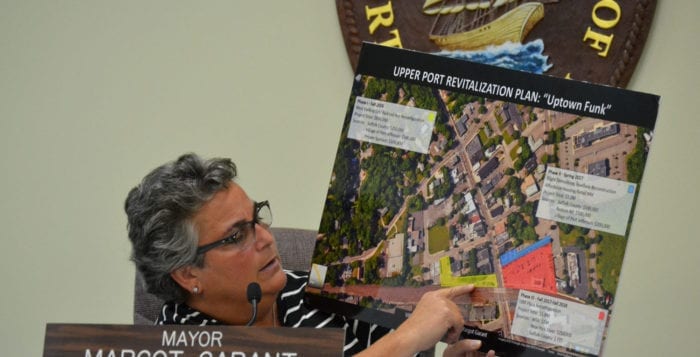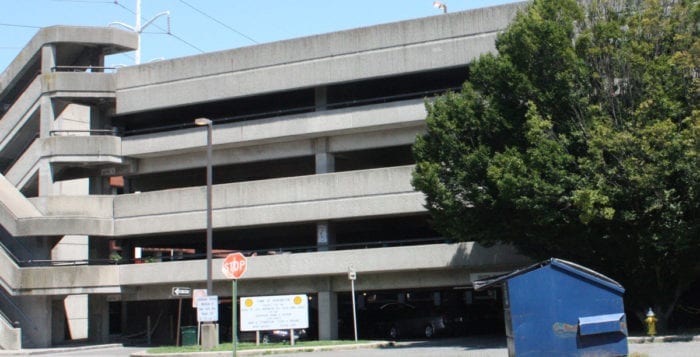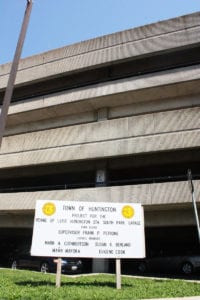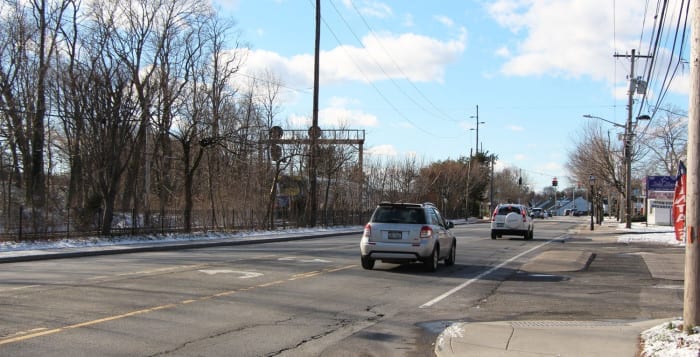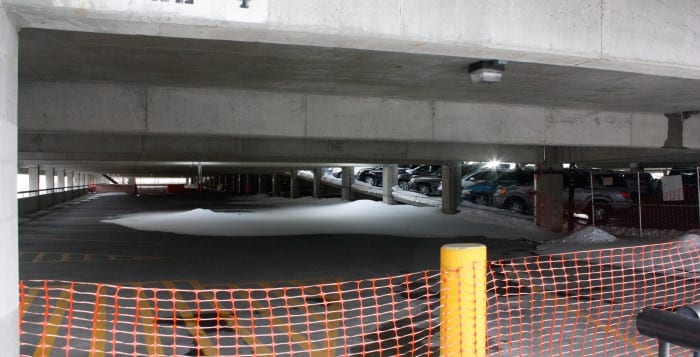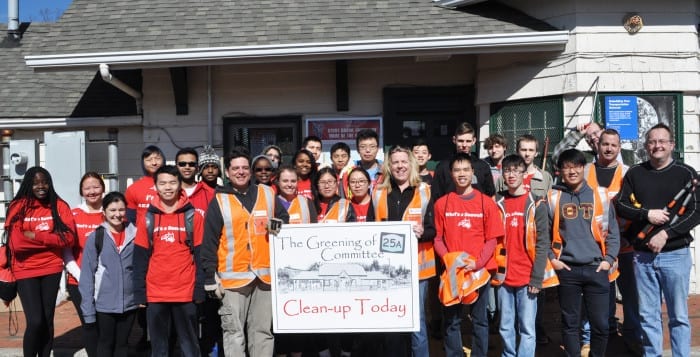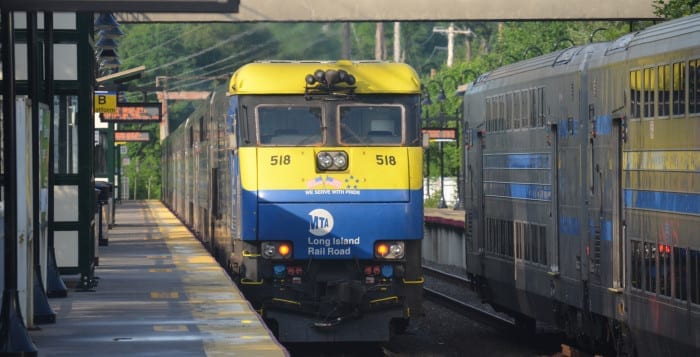By Alex Petroski
Port Jefferson Village is looking to bring Uptown Funk to Port Jefferson Station, but it’ll need some help.
The Port Jefferson Village board of trustees plans to submit a funding proposal to the Empire State Development Corporation to breathe new life into upper Port Jefferson.
The plans are part of the Restore New York Communities Initiative, which was funded in the 2015-16 state budget for the sole purpose of supporting municipalities in rehabilitating blighted commercial properties.
If awarded, the funding proposal would grant the village up to $500,000 to be used to clean up five adjacent parcels near the intersection of Perry Street and Main Street, about a block north of the Long Island Rail Road station. The village is calling the multiphased project Uptown Funk.
Mayor Margot Garant said during a public hearing on the matter Sept. 26 that the village plans to apply for the grant yearly in the hopes of redeveloping multiple areas in upper Port over time. The grant will also require the village to match at least 10 percent of the $500,000 toward the project, according to Garant.
“The $500,000 can be used for sidewalk restoration, demolition, redevelopment, parking lot improvements — all the things that would be necessary to help a developer make an improvement to this area.”
— Margot Garant
The location was selected following a blight study in May, which targeted several areas in Port Jefferson Station in need of attention. The buildings named in the funding proposal were ultimately chosen because of the village’s belief that the property owner will cooperate. The grant requires a willing participant from the private sector. Currently the buildings on the property are vacant.
Village grant writer Nicole Christian said she expects to hear back regarding the application by the spring of 2017, and at the moment no concrete parameters have been established for how exactly the money would be put to use.
“The $500,000 can be used for sidewalk restoration, demolition, redevelopment, parking lot improvements — all the things that would be necessary to help a developer make an improvement to this area,” Garant said. “The $500,000 is sort of loosely prescribed, and what I mean by that is we’re not told we have to put it into sidewalks, or told we have to put it into one aspect of the project. So as far as we see it, it enables the village to bring $500,000 to the table to help incentivize a project that will give back to the village perhaps more of what it would like to see, which is a strong, anchor retail establishment on the main floor, or a restaurant with housing above.”
Trustee Bruce D’Abramo expressed his excitement to get the project started.
“I’m really happy to see the village moving forward on this particular issue,” he said of the revitalization of Port Jefferson Station. “It has been a clear goal of mine since I became a trustee to do something about upper Port, and this is one of the mechanisms that I’m happy we can embrace.”
Trustee Larry Lapointe also voiced support for the plan.
“I think this particular corner is perhaps the worst corner uptown,” he said. “The two buildings that are on site were deemed to be so unsafe that we had to vacate and board them up. Two of the lots behind are magnets for homeless people, and we’re constantly working with the owners to get camps moved out of that area when they spring up. It’s sorely in need of redevelopment.”
Barbara Ransome, director of operations for The Greater Port Jefferson Chamber of Commerce, addressed the proposal during the hearing.
“The Greater Port Jefferson Chamber of Commerce certainly supports this potential funding and really feels it’s very important, especially in upper Port, in our business community there, and as a gateway coming into the village,” she said. “It’s critical for this type of development to continue.”

